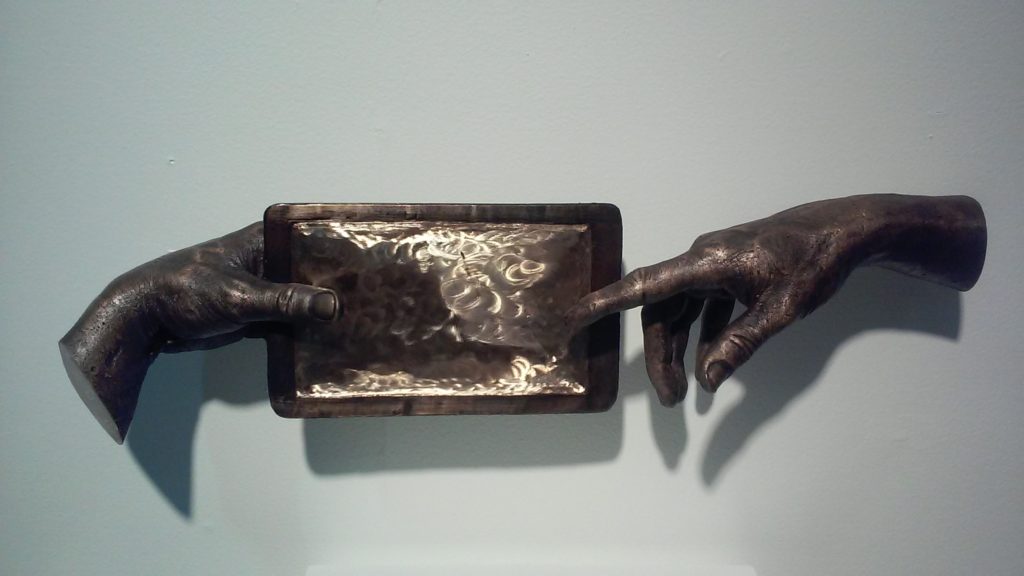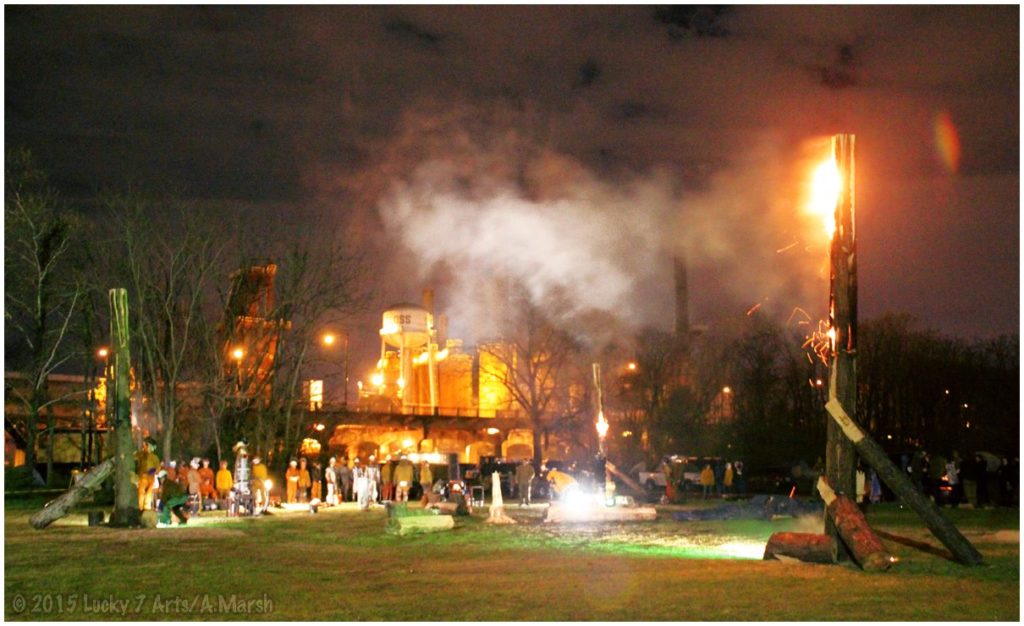Miranda Kyle is “good on paper.” With a BA from the University of North Carolina, a postgraduate degree from 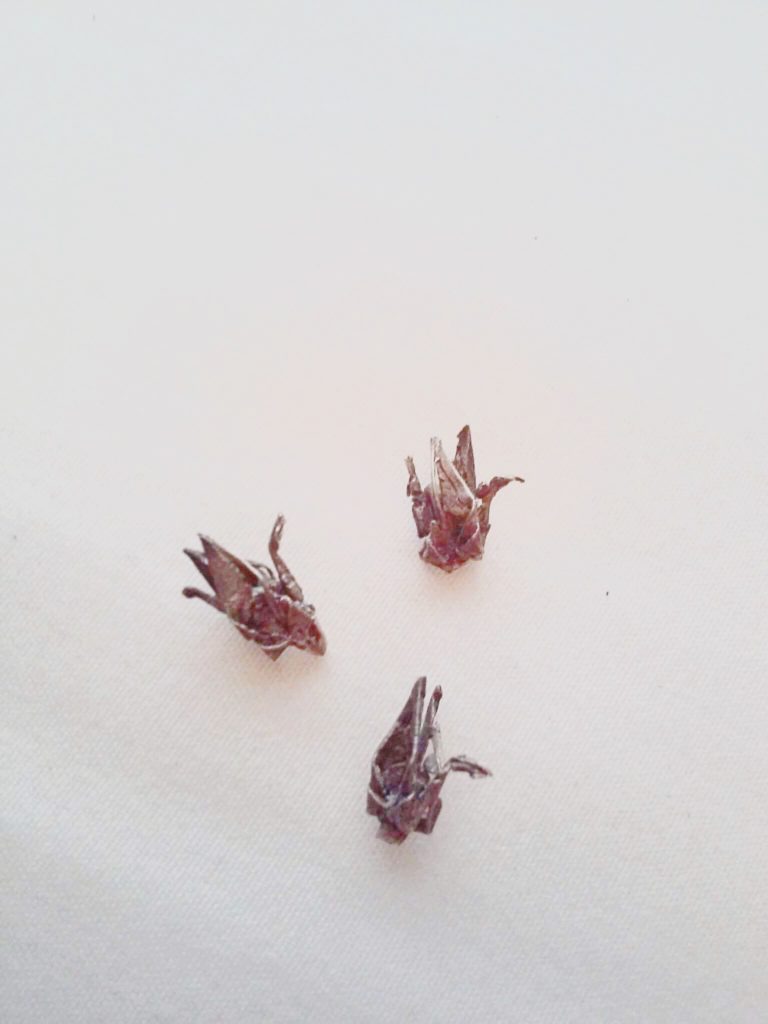 the University of Edinburgh College of Art, and a Masters in Fine Art from The Savannah College of Art and Design, her resume is impressive. But, hot damn, the gal is even better in real life.
the University of Edinburgh College of Art, and a Masters in Fine Art from The Savannah College of Art and Design, her resume is impressive. But, hot damn, the gal is even better in real life.
Unendingly insightful, she uses a lush lexicon to describe her experiences and thoughtfully picks the best compliments when speaking about other artists, always accenting her poetic words with hand gestures and a Cheshire cat smile. She is wildly enthusiastic, but never runs away with the conversation, desperate to know your opinion as much as she wants to tell you her own.
She has made storytelling her full-time job as the Art and Culture Program Manager for the Atlanta BeltLine, reaching a massive community and proudly helping them to engage in the spirit of discovery. When she’s not on the clock, Miranda explores her practice of working with metal. On her Instagram @fulcrum_laboratories she satirically writes as Dr. Hypatia Lovelace, documenting and reporting on “the machinological fauna of civilizations.” She explains machinery in a way that evokes David Attenborough documentaries, and her witty, satirical comments invite her audience to expand their minds.
CommonCreativ sat down with Miranda to discuss how a kid who grew up on Appalachian folktales found her way to the big city, her heart eyes for social media, and her plea for folks to get out of their comfort zone to fully see the tapestry that makes up the Atlanta art scene.
CommonCreativ: How did you become an artist?
Miranda Kyle: The short answer is my mom. I was lucky enough to have been homeschooled when I was little, so I learned really early on that to problem-solve was to build. While I was out getting my clothes muddy in creeks and making friends with all manner of critters, my mom — a wildlife rehabilitator, equestrian, and polymath — would be inside building these elaborate environments to explain to us how things worked. We would be able to physically crawl into the skeletal system and feel the bones and tissues that she made with her hands. That was how she taught, by allowing us to physically sit in these amazing sculptures and art pieces in order to fully understand the mechanics. It had a huge impact on me and informed my interaction with spaces. She taught me that my hands could problem-solve, all I ever had to do was build.
CC: Do you think all artists should go to Art School?
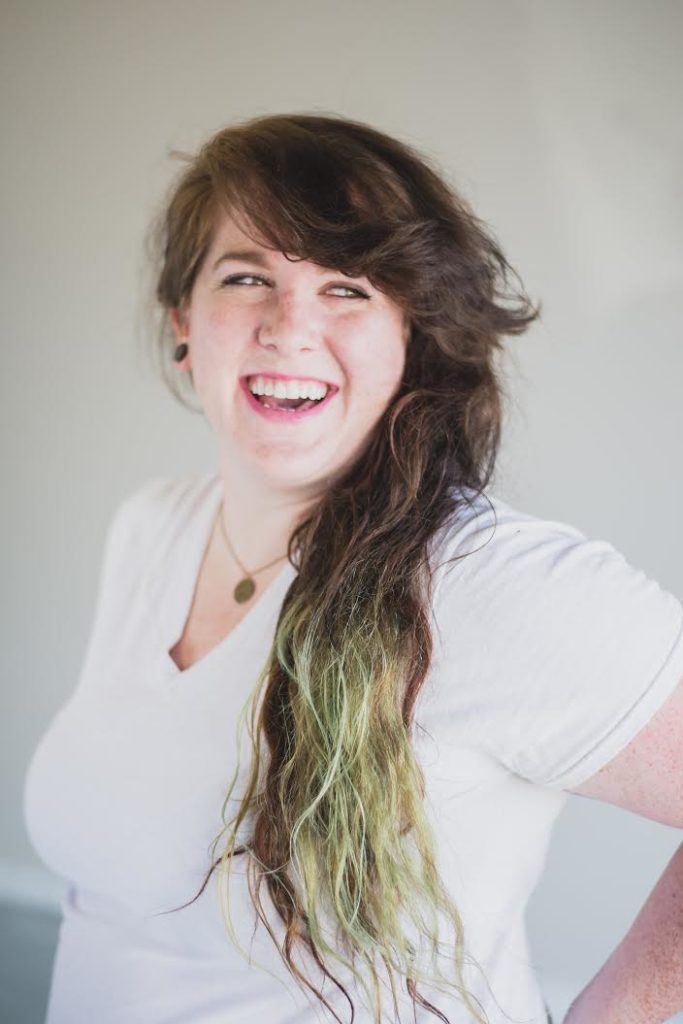 MK: No. First and foremost, it is a privilege to go to school, so the notion that someone has to attend college is ludicrous. I am so grateful for the education that I have received. SCAD, in particular, made me try so many new things that I would have never explored on my own, but I don’t think that it’s a necessity. You just have to find a system that will work for you.
MK: No. First and foremost, it is a privilege to go to school, so the notion that someone has to attend college is ludicrous. I am so grateful for the education that I have received. SCAD, in particular, made me try so many new things that I would have never explored on my own, but I don’t think that it’s a necessity. You just have to find a system that will work for you.
School can make some artists feel prohibited, and on the opposite side, there may be a lack of gallery representation or logistical tools that are taught in a classroom if someone forgoes a traditional education. There are pros and cons to each route. I see some artists on Instagram that went to trade school, learned how to weld and are killing the art game, and they don’t have any student debt! That is incredible to me. I’m totally pro trade school.
CC: Have you embraced social media as an artist?
MK: 100 percent. Instagram has revolutionized the idea of what representation in the art world means. If you can master self-promotion on the web then you can eliminate predatory practices of some traditional methods of representation and become your own advocate with no hanging fee.
I love that I have unlimited access to as much art that my heart desires, most of it is something that I would never have heard of, or be able to get to and here is this amazing platform where I can admire and directly reach the artists! I’m invited into DMs like I would be invited into artists’ studios. Open-door policy, ask all of your questions and share the passion. Social media is creating careers!
CC: Do you think that, because there’s so much access to art, the quality is being diluted?
MK: I think that qualifying who is an artist or not is a timeless argument. Art theorists have gone [in] circles around this very subject. Traditional mile markers for success are Euro-centric, and “achievement” and “mastery” in art do not always have the same obvious steps that becoming a doctor or concert pianist have. You have to know who your audience is and why you are making. I personally think that the digital age is exciting, but some people would argue that digital media is “not art.” The conversation about who is an artist ultimately boils down to, “What are you trying to tell me?” and, “How can you defend it?” If there’s no questioning, what’s the point?
CC: What are you most proud of as an artist?
MK: I’m really proud of my micro castings. It took technical proficiency and mastery, and a whole lot of math and science to get it right. As a woman, I was told that I couldn’t work with metal because it’s dangerous and you need to know chemistry and physics and mathematics and yadda yadda. Which is a ridiculous argument, because as an artist, I’m called to problem-solve and use a variety of mathematical applications daily. Being recognized for my work [by receiving the 2013 Le Kimche McGrath Fellowship for Arts and Science] when there were so many naysayers felt really good.
I’m also very proud of the collaborations that I’ve been fortunate to participate in over the years. Working with Amanda Platner and Hasani Sahlehe for the Downtown Players Club filled me up tremendously, as did The Hambidge Hive at Colony Square this past summer. The performances I worked on in Latvia with George Beasley and Coral Lambert, and working on South Broad Street with the galleries and artists there were also pivotal moments.
CC: Your day job is being the Art and Culture Program Manager for the BeltLine. Are you the one responsible for picking the art we see on the BeltLine?
MK: Yes and no. The BeltLine currently has about 8 miles of linear gallery space, and I curate where the artwork lives. The work is selected by a jury panel. Once the artists are selected, we collaborate on the execution to bring their vision to life. The BeltLine belongs to everybody — I want to hear everyone’s thoughts and feelings about what they want to see. I listen to word of mouth, host information sessions, attend Neighborhood Planning Unit meetings and have study groups to get feedback. I welcome and encourage community-driven conversation. After all, the whole point of these installations is to get Atlanta outside, exploring and connecting. I’m a conduit to make those voices heard; serving others is my happy place. I love being the bridge [that joins the gap between] the talk and realization.
CC: How do you feel about the Atlanta art scene?
MK: Comparing the Atlanta arts scene to another city is a waste of time. We’re unique, and there is so much going on. We’re the creative capital of the South. I’m worried about the dangers of creative drain though. There is a good bit of support for artists first starting out with programs like the awesome The Creatives Project that gets things going, but how are we supporting our artists one step beyond that? Where is the support for those in between emerging and established artists? How do we build up that middle level and not lose our creatives to other cities that will provide sustenance? I’m not sure, but I want all of us holding keys to start doing something about it.
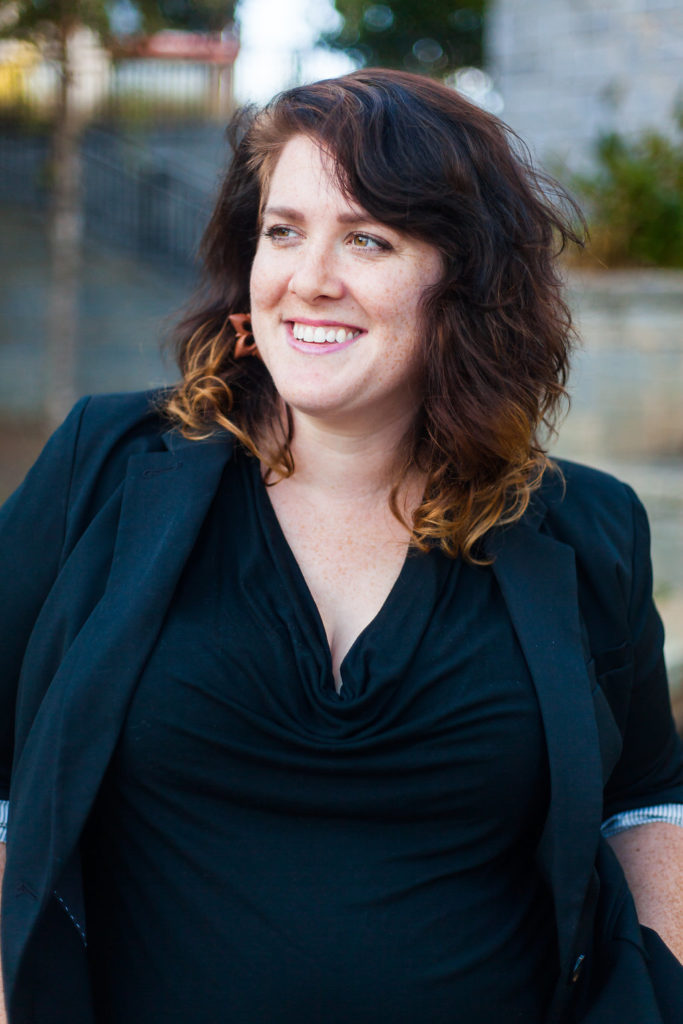 I adore our vibrant DIY scene, but once you get past that level there is an obvious cultural divide. You can go to an exhibition in one part of town and only see white faces, like an ocean of mayonnaise, and no one is asking themselves why. Then hop a few blocks over to another art show and none of those folks are to be found. It’s like they are opting out of a huge chunk of the creative ecosystem of Atlanta. It blows my mind.
I adore our vibrant DIY scene, but once you get past that level there is an obvious cultural divide. You can go to an exhibition in one part of town and only see white faces, like an ocean of mayonnaise, and no one is asking themselves why. Then hop a few blocks over to another art show and none of those folks are to be found. It’s like they are opting out of a huge chunk of the creative ecosystem of Atlanta. It blows my mind.
There is a serious problem with cross-pollination in our art scene. I don’t think that it’s intentional, but we aren’t communicating with one another. Atlanta may be too busy to hate, but sometimes we just don’t try hard enough and the apathy is frustrating. I want people to investigate their city and get out of their comfort zone. There is so much great art being made, but people are attending the same galleries, seeing the same artists over and over. Enough already.
CC: What’s your solution?
MK: Go to a gallery or venue you’ve never been to before. Talk to someone that you normally wouldn’t have the opportunity to meet. I think the Art on the Atlanta BeltLine project can help, but we are only one program, and we can’t do this alone. More live/work spaces would be amazing. There are organizations like the Goat Farm that can accommodate all manner of projects, but most other artists live/work spaces are only accommodating to tabletop-size portfolios. There isn’t much for anything affordable for musicians, performers, installation artists or sculptors. I think that more residencies and funded space for creatives to actually create would be so beneficial.
CC: What’s your advice for an artist just starting out?
MK: Be unapologetically authentic. Authenticity always makes the biggest noise and impact. Don’t be small. Find your North Star and tell that story over and over until your throat is burned and you can’t talk anymore. Then find another star.
I’ve always believed in the Alan Watts approach: I focus on the thing that excites me and follow that, however twisty the road may be. These days you have to wear so many hats, you have to be the artist, but you also need to be a networker, an entrepreneur, and a freaking social media guru. If you don’t love the art with your whole heart, you’re not going to want to do any of that other stuff. Please don’t ever let someone tell you how much you are worth. Remember what The Oregon Trail taught us: you will die from “exposure.”
CC: What’s on the horizon for you?
MK: I’m starting a series of DIY composition notebooks that show people how to use tools. Typically when you walk into a workshop, any [non-cisgendered], hetero men folks can be judged pretty hardcore, so I wanted to make a zine/art piece that would give them the basics so they can hold their own and feel confident. We need to teach problem-solving skills so that people aren’t terrified when they don’t know what to do. I basically just want to help non-men kick some ass and learn how to do shit.
You can follow Miranda and see more of her work on Twitter and Instagram.

